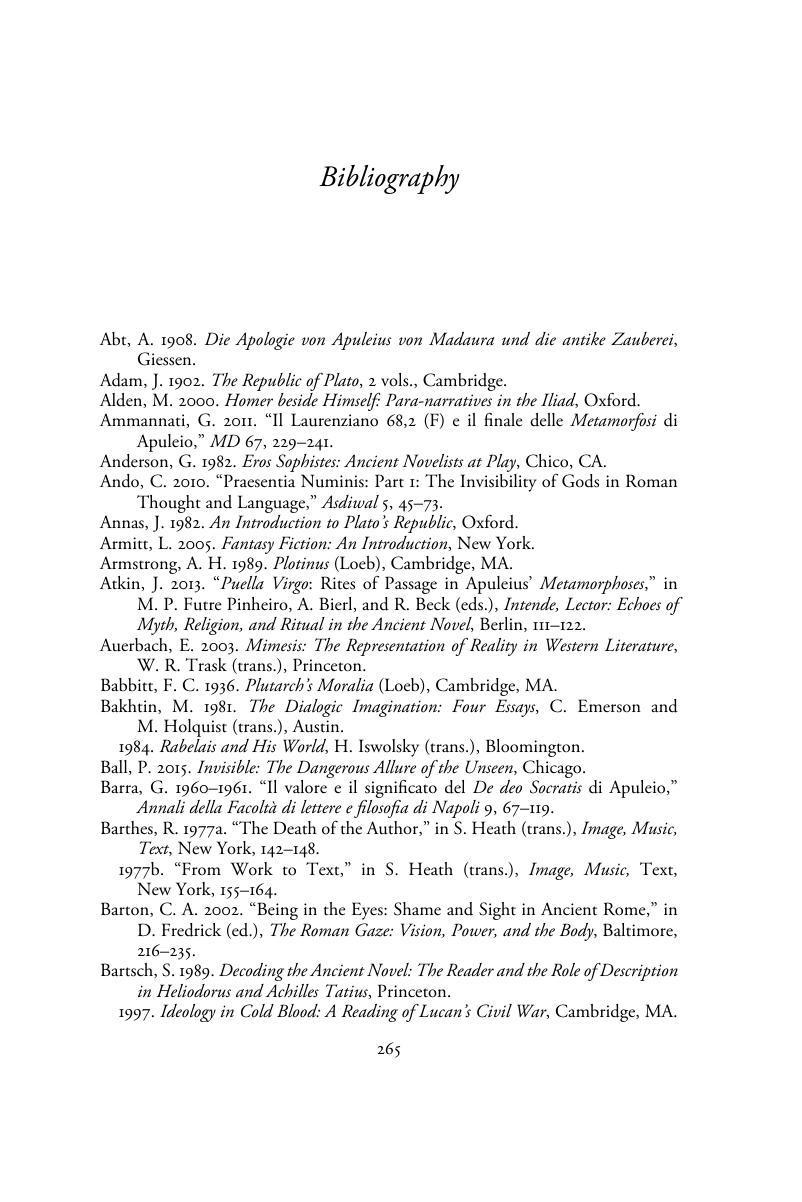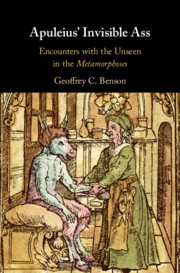Book contents
- Apuleius’ Invisible Ass
- Apuleius’ Invisible Ass
- Copyright page
- Dedication
- Contents
- Acknowledgments
- Abbreviations
- Introduction: Uncovering the Unseen in Apuleius
- Chapter 1 Apuleius’ Daemonic Voice
- Chapter 2 Invisible Man: Lucius, Gyges, and the Ethics of the Metamorphoses
- Chapter 3 Invisibility and the Structure of Reality in Cupid and Psyche
- Chapter 4 Scattered Limbs and Gleaming Bones: The Symbolism and Metaphysics of Fragmented Bodies in the Metamorphoses
- Chapter 5 Apprehending the Egyptian Gods: Focalization and Mysticism in Book 11
- Chapter 6 The Power of the Metamorphoses
- Bibliography
- Index
- References
Bibliography
Published online by Cambridge University Press: 04 May 2019
- Apuleius’ Invisible Ass
- Apuleius’ Invisible Ass
- Copyright page
- Dedication
- Contents
- Acknowledgments
- Abbreviations
- Introduction: Uncovering the Unseen in Apuleius
- Chapter 1 Apuleius’ Daemonic Voice
- Chapter 2 Invisible Man: Lucius, Gyges, and the Ethics of the Metamorphoses
- Chapter 3 Invisibility and the Structure of Reality in Cupid and Psyche
- Chapter 4 Scattered Limbs and Gleaming Bones: The Symbolism and Metaphysics of Fragmented Bodies in the Metamorphoses
- Chapter 5 Apprehending the Egyptian Gods: Focalization and Mysticism in Book 11
- Chapter 6 The Power of the Metamorphoses
- Bibliography
- Index
- References
Summary

- Type
- Chapter
- Information
- Apuleius' Invisible AssEncounters with the Unseen in the <I>Metamorphoses</I>, pp. 265 - 288Publisher: Cambridge University PressPrint publication year: 2019



